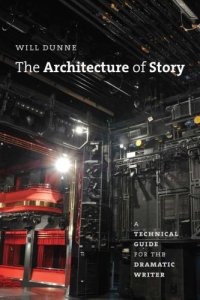
Ebook: The architecture of story: a technical guide for the dramatic writer
Author: Dunne Will
- Tags: Drama--Technique, Playwriting, Drama -- Technique
- Series: Chicago guides to writing editing and publishing
- Year: 2016
- Publisher: University of Chicago Press
- City: Chicago;London
- Language: English
- azw3
While successful plays tend to share certain storytelling elements, there is no single blueprint for how a play should be constructed. Instead, seasoned playwrights know how to select the right elements for their needs and organize them in a structure that best supports their particular story. Through his workshops and book The Dramatic Writer's Companion, Will Dunne has helped thousands of writers develop successful scripts. Now, in The Architecture of Story, he helps writers master the building blocks of dramatic storytelling by analyzing a trio of award-winning contemporary American plays: Doubt: A Parable by John Patrick Shanley, Topdog/Underdog by Suzan-Lori Parks, and The Clean House by Sarah Ruhl. Dismantling the stories and examining key components from a technical perspective enables writers to approach their own work with an informed understanding of dramatic architecture. Each self-contained chapter focuses on one storytelling component, ranging from "Title" and "Main Event" to "Emotional Environment" and "Crisis Decision." Dunne explores each component in detail, demonstrating how it has been successfully handled in each play and comparing and contrasting techniques. The chapters conclude with questions to help writers evaluate and improve their own scripts. The result is a nonlinear reference guide that lets writers work at their own pace and choose the topics that interest them as they develop new scripts. This flexible, interactive structure is designed to meet the needs of writers at all stages of writing and at all levels of experience. -- Amazon.com.;Genre -- Style -- Dramatic focus -- Rules of the game -- Framework -- Stage directions -- Other script elements -- Title -- Characters -- Offstage population -- Plot -- Character arcs -- Story arc and main event -- Subject and theme -- Dialogue -- Visual imagery -- Physical realm -- Emotional environment -- Social context -- Laws and customs -- Economics -- Power structure -- Spiritual realm -- Backstory -- Point of attack -- Inciting event and quest -- Central conflict -- What's at stake -- Strategies and tactics -- Pointers and plants -- Reversals -- Crisis decision -- Climax and resolution.
Download the book The architecture of story: a technical guide for the dramatic writer for free or read online
Continue reading on any device:

Last viewed books
Related books
{related-news}
Comments (0)